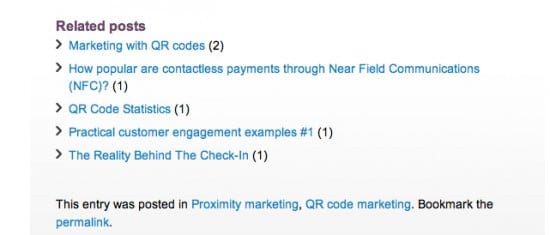How to use a B2B blog to generate leads
Our last post on business blogging looked at seeding and distribution and how to get people to your blog.
However, the end goal of a business blog (or any customer facing content asset) must be to stimulate demand and generate enquiries.
In this final post of this business blogging series we look at how companies can use blogs to drive demand generation. For more information you can see our demand generation definition.
Create a compelling call-to-action
There needs to be a compelling call to action to take a visitor's fledgling interest in your business to the next level.
It is commonly accepted that it takes time to build traffic to a blog, and even longer for people to interact with it. So, assuming it is almost impossible to encourage blog visitors to engage with a corporate blog, how can you keep them there and get them to take an action?
Here are six tried and tested ways businesses can generate demand through their blogs:
1. Offer recommended reading
After you've read this blog post, it's no accident that a list of other, hopefully relevant, blog posts will be offered to you based on the content of this one.
Offering visitors another post on the same page gives them a reason to stay and click around other content. Related post plugins like this can also help with SEO.

2. Gain permission to send specific updates by email
Email remains critical to business marketing communications - securing an opted-in email address is a primary goal for most businesses in the process of building a new business pipeline.
Dig a bit deeper and you can build targeted email lists based on specific site content.
The content could be 'state of the industry' reports, building regulations updates, technology recommends or any other form of regular content.
Targeting content at niche groups builds trust and moves a minority towards transacting.
3. Offer downloads
Every discipline and business sector has its common points of pain.
Applying a bit of creativity is all that’s required to showcase your solutions to these widely recognised problems by providing impartial white papers, ‘how to’ guides, webinars, slidesets and other digital material.

US software company, Hubspot, is a master at taking blog posts further. It sends blog content viral by offering a portfolio of free guides and downloads via forms designed to easily populate its contact database.
4. Offer exclusive content
As you build a reputation for great content, consider putting some of it behind an exclusive VIP membership wall.
Whether you elect to treat this content as free, freemium or premium is your call. Keep in mind that this content is specifically designed to target a niche adopter group with the potential to become brand advocates and ambassadors.
This VIP group will need to provide more personal information in exchange for access to specific content; this exchange deepens their commitment to and relationship with the brand.
Seth Godin's Domino Project (2011) was an interesting exercise in building powerful viral book launches, starting with a small opted-in community accessing products at an entry level price.
5. Solicit feedback
Show that your blog isn't just one way traffic by asking for feedback.
Use analytics to establish which topics people liked the most; end blog posts with questions and requests and run polls.and surveys, publishing the findings.
Create discussions and challenge blog visitors to get involved, seed comments on new blog posts so visitors aren't put off by being first.
6. Build community
Write provocative articles that demand discussion.
Offer industry standard sharing functionality for Twitter, Facebook, Linkedin, Google+ and the major bookmarking sites.
Use recognised comment functionality like Disqus to ensure people can quickly and easily comment on posts and that recognises them when they return. And respond promptly to comments.
See your blog as a community; a place for likeminded people to come and find useful information and discuss it. It's hard but not impossible.
What other demand generation techniques have you used on your blog or seen used online?
How has it worked for you?








